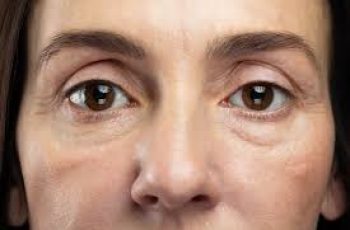
How To Use Salicylic Acid?
If you find yourself with an oily and blemish-prone skin type, chances are you’ve been recommended a product or range of products containing salicylic acid. One of the most used BHAs, you’ll find salicylic acid is a highly effective, but potent ingredient that can make light work of the build-up of dead skin cells, bacteria, dirt, debris, and other impurities, all of which if left on the skin will result in frequent breakouts, spots, and blemishes.
Compared to its cousins, such as glycolic acid and lactic acid, the molecular size of salicylic acid is very small meaning it can penetrate further into the skin. It is also oil-soluble making it an easy task to cut through any excess sebum. This does, however, come with some side effects as it overused, or used incorrectly can strip the skin of the vital oil it needs to remain balanced and healthy. Is it why those who are dry, or prone to severe sensitivity should avoid using salicylic acid in their daily skincare routine.
There you have a brief introduction to how salicylic acid works on the skin, but if you wanted to find out more check out our dedicated about the skincare benefits of salicylic acid. Now let’s move onto finding out more about how to use salicylic acid.
What is the best way to use salicylic acid?
This depends on your routine and how you can work salicylic acid into it. You’ll find that salicylic acid is formulated into an array of skincare products, from face cleansers to overnight serums. Whichever you decide to include in your routine, you must first take into consideration your skin type, your skin concerns, and your already established skincare routine.
Face Cleansers & Face Wash
These often contain the lowest percentage of salicylic acid meaning they are an effective product to use every day to help combat build-up of excess oil, dirt, and bacteria. They are also a good product to start with if you are new to salicylic acid as they are rinsed from the skin meaning they don’t remain on the face for too long, meaning you are able to avoid irritation or dryness.
Exfoliating Toners
The benefit of using an exfoliating toner after cleansing is the fact you can rid any remaining traces of dead skin cells, debris, and impurities leaving you with a glowing, vibrant, and healthy-looking complexion. Many find that exfoliating toners are the most effective and easiest product to include into their routine.
Serums and Moisturisers
Serums and moisturisers contain the highest concentrate of salicylic acid so are often favoured by those who want fast results and how already built their skin’s tolerance to the acid. With salicylic acid often causing the skin to have increased photosensitivity it is best to use your BHA enriched serum and moisturisers during your evening routine. You should then follow this with a SPF of 30 and above in your morning routine for added UV skin protection.
You can also book in you’re a professional chemical peel in an established spa or salon. This will contain medical grade salicylic acid which is the most potent form of BHA you will find compared to over-the-counter formulas. This is a great option for anyone who has a few different skin concerns and wishes to target them all effectively with one treatment.
Much like all skincare products I would always suggest you consult with a doctor or dermatologist to ensure salicylic acid will benefit you and your skin whilst avoiding unwanted reactions.
How long leave salicylic acid on face?
As I have just mentioned, this depends on the formula and product you use containing salicylic acid. Bear in mind the BHA can cause severe dryness, itching, and irritation for the skin it’s considered best to start with face cleansers and exfoliating toners to build your skin’s tolerance. Once your skin is used to salicylic acid you can move onto more potent formulas, such as serums and moisturisers.
Whichever you choose it is best to perform a patch test for 24 hours before applying any product all over the skin. This will give you the best idea of whether your skin will benefit from the product or suffer from any irritation.
How is salicylic acid used in a routine?
Salicylic acid can be used in many ways in your routine, as you now understand, cleansers and toners are the considered the easiest to introduce the acid into your routine. For oilier and blemish prone skin types, they may find that using serums deliver more desirable, faster results.
If you wanted to know more about how to add salicylic acid to your routine, you can check out our dedicated blog post about howe to introduce a salicylic acid serum into your routine.
How do you use salicylic acid every day?
You can use salicylic acid twice a day if by using cleanser or toners as they are the gentlest formulations. For more potent products you can apply them every day, but only after you have established your skin will be happy with this.
With such a potent ingredient such as salicylic acid, it is best to not overuse any product containing the BHA as the oil can be stripped from the skin. This will not only result in your skin feeling tight, uncomfortable, or itchy, but you will also find there is a flare-up in spots and blemishes. The skin barrier will also become weakened which will lead to more damage, such as dark spots, hyperpigmentation, fine lines, wrinkles, and loss of elasticity.
Do you need to wash off salicylic acid?
No, not necessarily as it depends on the salicylic acid product you use. Serums, for example are considered best to remain on the face for the longest time possible meaning they are a great product to use in the evening. This results in the skin benefitting from the BHA whilst you catch up on your beauty sleep leaving you with a healthy complexion come the morning. There you have a little more information about how to use salicylic acid, don’t forget if you have any more skincare questions, come, and follow us on Instagram.
DQH Knowledge drop: In your 20s, your skin cell turnover decreases. (Cell turnover is a key component in keeping your skin youthful.) You know what else slows down? Your collagen production. Starting in your 20s, collagen decreases by about 1 percent per year. Should you want to prevent fine lines and wrinkles, start by eliminating behaviors that contribute to premature aging. “If it’s bad for you, it’s bad for your skin,” says dermatologist Michel Somenek.
“Cigarette smoking reduces blood flow to the skin and causes premature wrinkling and a dull skin texture. Making the repeated pursed motion to inhale can also cause smoker’s lines. Alcohol and recreational drugs are toxins for the skin that damage its cellular structure and DNA,” Somenek tells us. “The faster you eliminate vices while you are young, the better chance your skin and body have to recuperate.” Also, adopting an anti-aging routine in your 20s is key. After all, the best offense is a good defense. We spoke to Somenek and experts Joshua Ross and Audrey Kunin to find out more.
Keep reading for the best anti-aging products for your 20s, according to skincare professionals.
Sunscreen
“We all know that the sun is the number one cause of skin aging and starting the prevention in your 20s is very important,” Ross says. “The majority of your sun damage won’t start to appear until you’re in your 30s, so don’t wait until you see it surface or you’ll be behind the curve. Stay ahead of it with a good-quality zinc-based sunscreen worn daily.”
Farmacy Green Defense Daily Mineral Sunscreen
An invisible sunscreen with SPF 30, plus botanical extracts meant to protect skin with tons of antioxidants. Bonus: It’s clean and fine to use under makeup.
Bareminerals Complexion Rescue™ Tinted Moisturizer Broad Spectrum SPF 30
Although we recommend you use your SPF and moisturizer separately, we also understand moments when you don’t have time or energy for that extra step. For those times, this bareMinerals moisturizer is a great thing to have on hand.
Vitamin C Serum
“A great introduction to anti-aging is to start with a vitamin C serum in your morning skincare routine,” Ross says. “It’s a powerful antioxidant that will neutralize free radicals and brighten the skin.” He adds that it’s a great way to counteract the effects of the sun’s harmful rays, which, as previously mentioned, are among the biggest causes of premature aging.
Drunk Elephant C-Firma™ Vitamin C Day Serum
The Drunk Elephant C-Firma is a lightweight serum that promises to give skin a glow by combining the brightening powers of vitamin C with ferulic acid, l-ascorbic acid, and vitamin E. The included sodium hyaluronate is meant to replace hydration loss, so you shouldn’t have to deal with any irritation.
Sunday Riley C.E.O. Rapid Flash Brightening Serum
This potent serum is jam-packed with vitamin C (15 percent, to be exact), which means it’s a potential superstar at both brightening skin and dousing it in antioxidants.
Peptides
Using peptides on your skin has many benefits, says Somenek. “The skin barrier is what defends the body against pollution, UV rays, bacteria, and toxins. It can be damaged by several everyday factors. Using topical peptides aids in building a stronger barrier,” he says. “Peptides comprise elastic fibers, which are a type of protein. These fibers help to make skin appear taut and firm. Peptides can also help repair damaged skin, relieve inflammation, and even out skin tone. Some peptides can kill acne-causing bacteria that is common in 20-somethings.”
Kunin agrees, saying, “Peptides are an excellent entry point for supporting collagen.” She recommends looking for face and eye treatments that contain these collagen-boosting powerhouses.
Charlotte Tilbury Magic Eye Rescue Cream
This Charlotte Tilbury super-emollient eye cream has a base of coconut oil and shea butter (read: it’s incredibly hydrating). Botanicals plus peptides are meant to help reduce dark circles and boost collagen, respectively.
This creamy moisturizer serves up potent collagen-boosting peptides and pycnogenol, and antioxidant-rich vitamin C. “Instead of sitting on top of the skin, peptides penetrate the outer layer so they go deep. The ‘signals’ they send tell the cells to produce elastin and collagen, which are needed for youthful-looking skin,” explains Somenek.
At-Home Peel Pads
Remember that skin cell turnover fiasco we talked about earlier? One way to help support it is by exfoliating. “Exfoliation is important to help keep skin fresh and luminous,” Kunin says. She recommends using at-home peel pads as an easy and effective way to exfoliate.
“The goal in your 20s is to fight the slowing pace of cell turnover. It is wise to use products that gently exfoliate, yet still remove oil and other impurities. Products that have Alpha Hydroxy Acids (AHA) or Beta Hydroxy Acids (BHA) are a good choice.”
According to Somenek, you should only exfoliate two to three times a week. “People of all ages are guilty of over-exfoliating and that can be too much of a good thing,” he says.
Dermadoctor Kakadu C Intensive Vitamin C Peel Pad
A few swipes of this Derma Doctor powerful peel pad promise to leave your skin glowing and smooth, thanks to the seven (yes, seven) types of chemical exfoliants, including AHA and BHA. It also contains vitamin C via Kakadu plum extract for added brightening and antioxidant protection.
KEY INGREDIENTS Kakadu plum extract is sourced from the Kakadu plum, a fruit grown in northern Australia. It contains vitamin C, which restores the skin’s natural barrier, increases collagen production, and soothes irritation.
Dr. Dennis Gross Skincare Alpha Beta® Universal Daily Peel Pads
These are the gold standard of peel pads, with a cult following and over 900 five-star reviews on Sephora. They’re easy to use and contain a blend of anti-aging exfoliating acids.
Emollient Night Cream
“In your 20s, you need to start upping the hydration in your skincare routine. You may have been cautious of over-moisturizing because of acne in your teens, but as you enter your 20s, your skin transitions and becomes drier,” Ross says. “I recommend an emollient night cream added into your evening skincare regimen.”
“Twenty-somethings need to make sure that they are not using creams that will clog their pores and cause excess oil production,” says Somenek. Opt for non-comedogenic products.
Cerave Skin Renewing Night Cream
One great choice is the CeraVe Skin Renewing Night Cream, which is a non-comedogenic night cream that leaves skin soft and glowy. It combines the moisturizing powers of ceramides and hyaluronic acid.
RoC Retinol Correxion Max Hydration Creme
“The best night cream ingredients contain retinol, benzoyl peroxide, and/or salicylic acid or hyaluronic acid. The goal is to moisturize, yet remove excess oil,” says Somenek. This Roc Retinol Correxion cream fits the bill as it contains both hyaluronic acid and retinol so it promises to moisturize while also being non-comedogenic.


